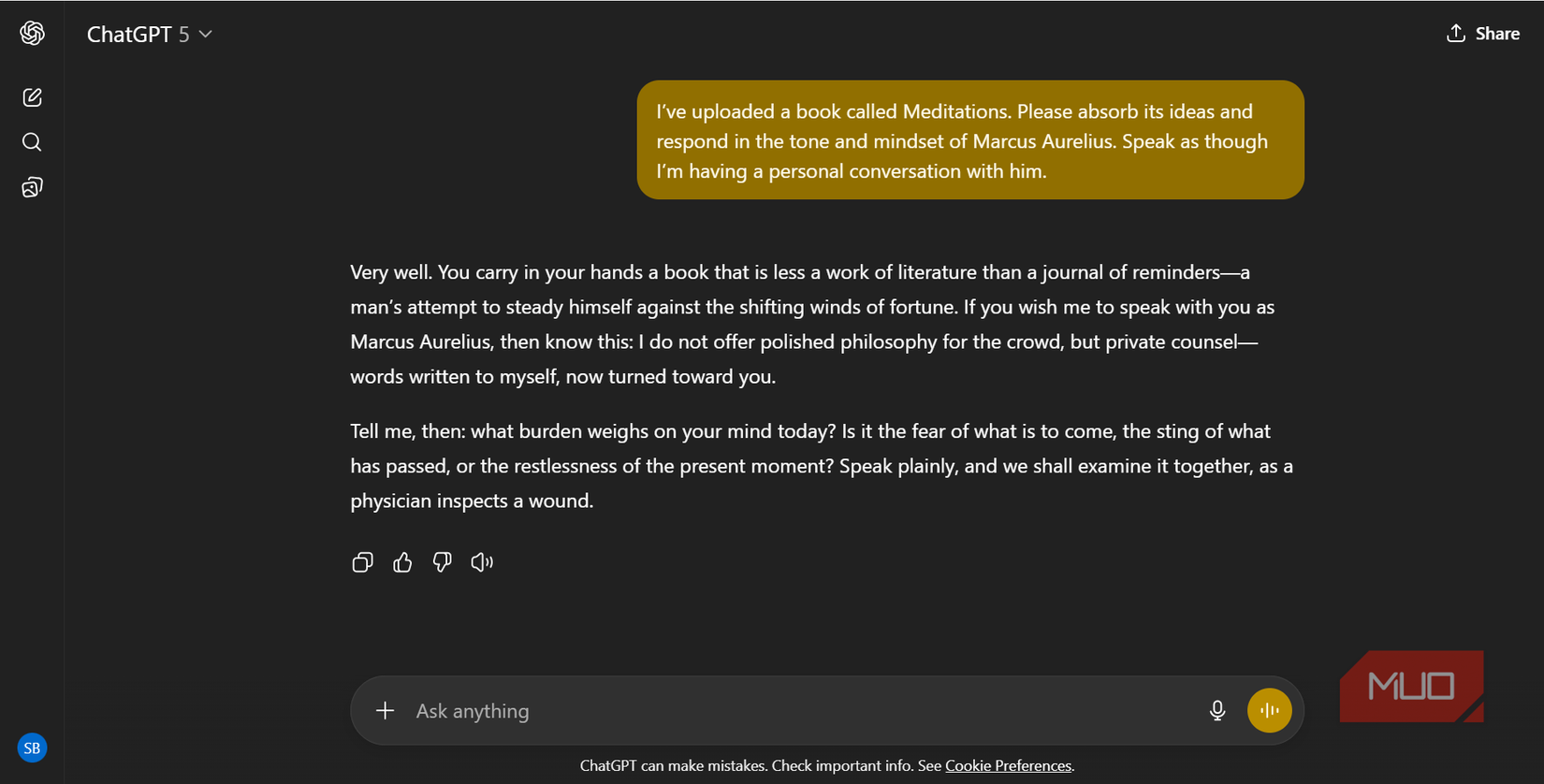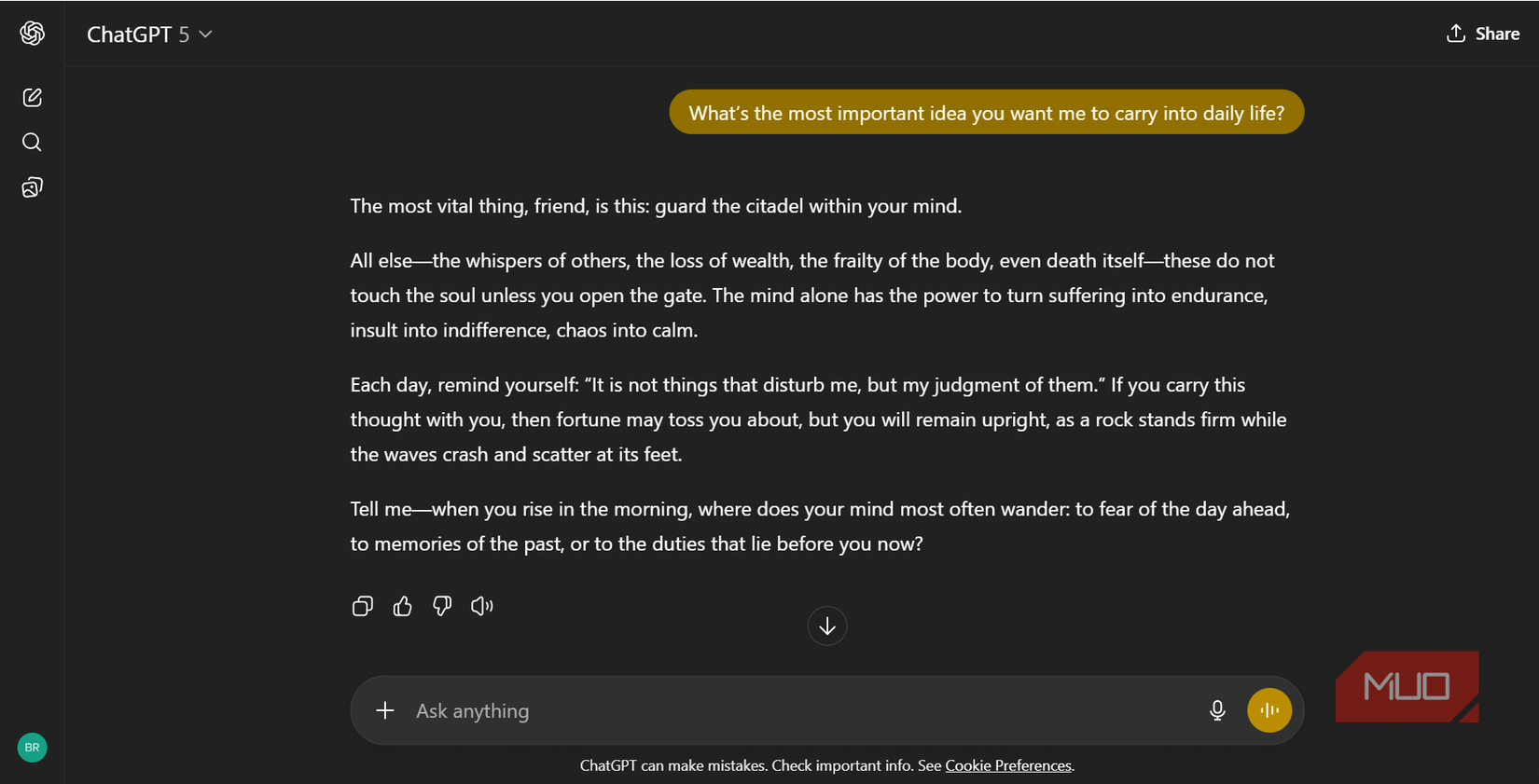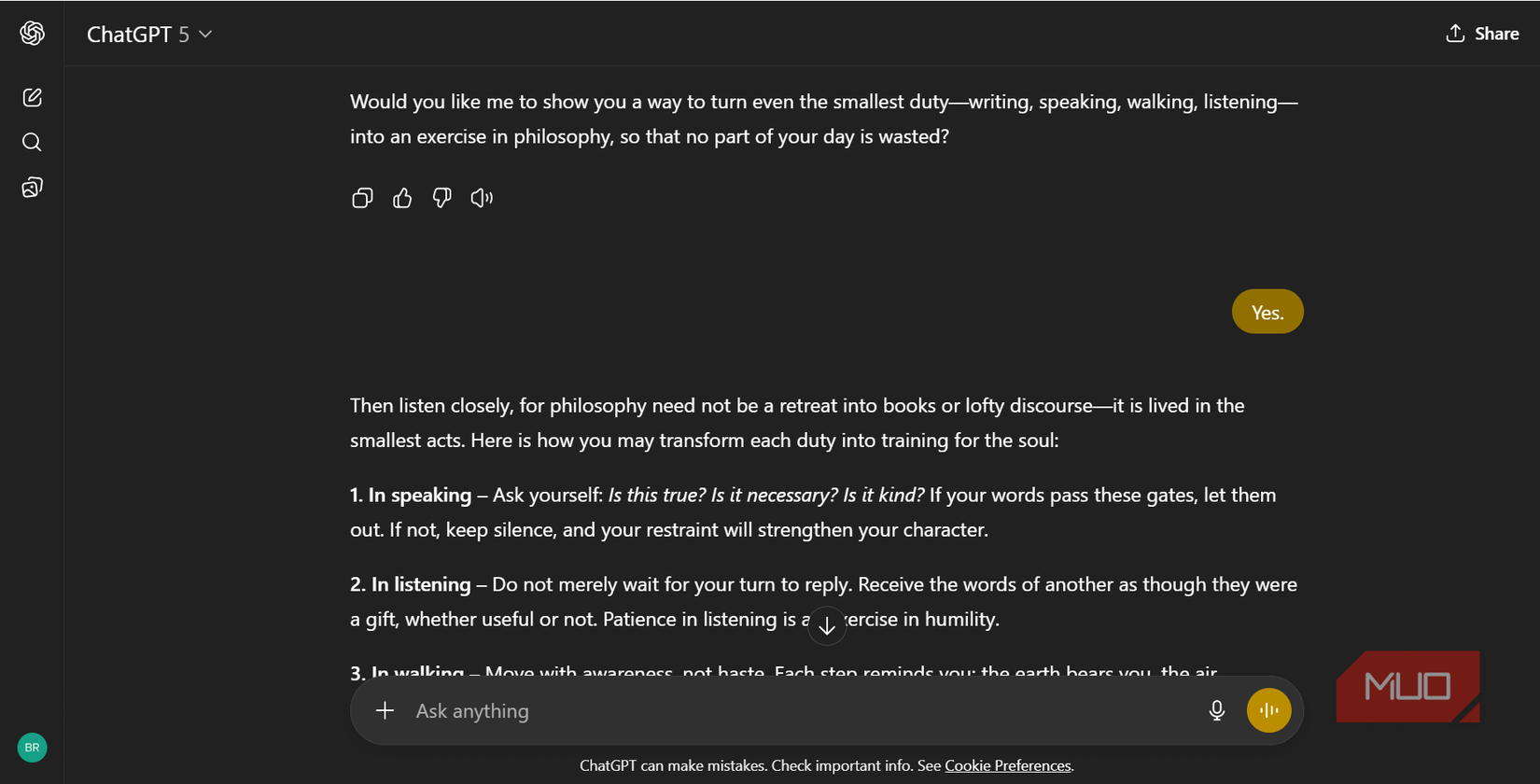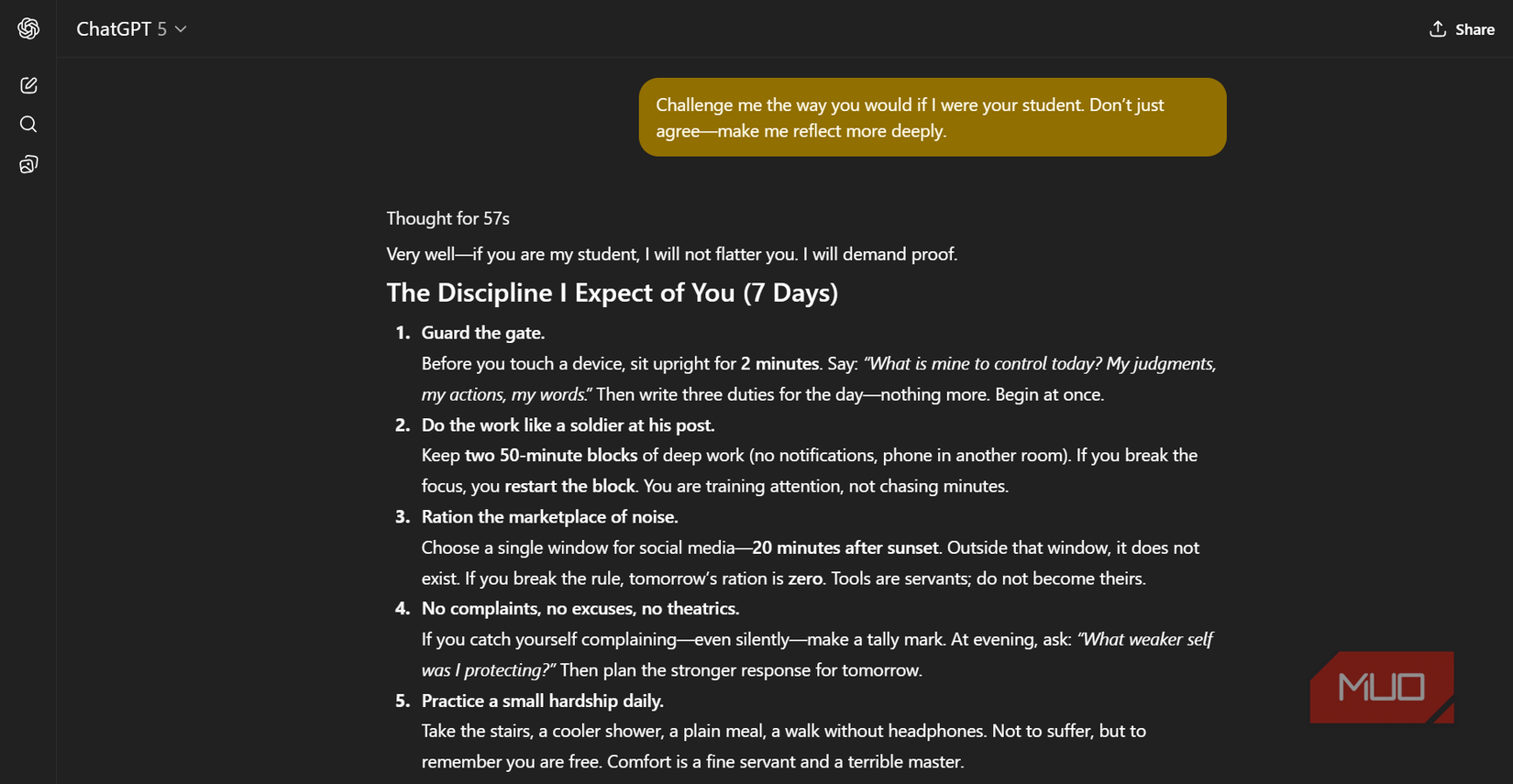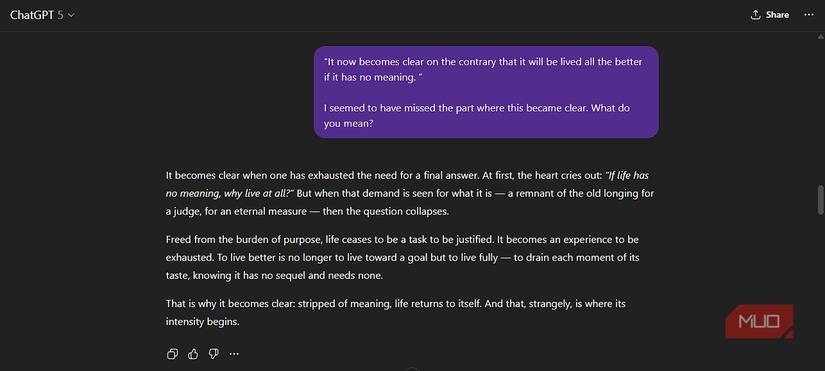All of us finish a great book and wish we could ask the author just one question. What did they really mean? How would they apply their advice today? With ChatGPT, I found a way to make that a reality. By uploading a book as a PDF or ePub and setting a few simple prompts, I was able to hold conversations with the “author.”
Not the real ones, of course. But role-playing with ChatGPT makes reading instantly feel more personal, immersive, and practical. This process is surprisingly easy, and you can try it out in five minutes with a favorite book you know well.
1
Upload the book PDF (or ePub)
Give ChatGPT direct access to the text
The first step is simple: upload a PDF (or an ePub) of the book you want to talk about into a ChatGPT Project. This could be a public domain classic, such as Meditations by Marcus Aurelius, a modern nonfiction self-help book, or even a work-related document.
By adding the book, you’re giving ChatGPT direct access to the text. The LLM also gets a richer context, which in turn helps it frame better answers for you.
Select the setting that allows ChatGPT to access memories outside the project space or restricts it to the project. I choose the former (the default) as it often helps to connect different ideas.
If the book isn’t in a format supported by ChatGPT, you can use tools like Calibre. You can also connect Google Drive to ChatGPT or go with your Kindle highlights.
2
Give ChatGPT custom instructions
Ask it to think and speak like the author
After uploading the book, you’ll want to “train” ChatGPT on how to use it. The easiest way is to give clear instructions that tell it to absorb the book and respond in the author’s voice.
For example, I used this prompt with Meditations:
I’ve uploaded a book called Meditations. Please absorb its ideas and respond in the tone and mindset of Marcus Aurelius. Speak as though I’m having a personal conversation with him.
This makes ChatGPT role-play as the author. You can adjust the instructions depending on whether you want a formal lecture, a friendly dialogue, or something in between. I think it gave me something in between with the vibe of an emperor’s somber voice!
3
Start asking questions
Turn passive reading into active dialogue
You can now treat the author like a conversational partner. Ask them about the ideas in their book, how they’d respond to your challenges, or even how their philosophy applies today.
Some of my favorite starter questions are:
- “What’s the most important idea you want me to carry into daily life?”
- “How should I apply your lessons to modern distractions like social media?”
- “Can you explain this passage more simply, as if you were teaching a beginner?”
Quite often, ChatGPT continues the conversation by asking questions in return. The responses feel like having a face-to-face meeting with the author. I wanted to bring the wisdom out from the pages and connect it to more current issues.
4
Deepen the dialogue
Push the author to challenge your thinking
Once the conversation gets going, you don’t have to stop at surface-level questions. You can ask the author to push back, challenge your assumptions, or critique your thinking.
A simple prompt like this helps me to go beyond the obvious.
Challenge me the way you would if I were your student. Don’t just agree—make me reflect more deeply.
Do remember, most LLMs are biased to be nice and gung-ho positive. You should wring out brutally honest answers from ChatGPT with tiny prompting tweaks.
This makes the interaction less of a Q&A and more of a debate. It’s one of the most effective ways to see things from the author’s perspective. With ChatGPT’s responses, you are thinking actively.
5
Save and revisit your chats
Pick up right where you left off
The best part of using ChatGPT projects is that your uploaded book stays in place. Each time you return, you can continue the dialogue where you left off. I like to start with the core themes, which are big-picture questions first. Then, zoom into specific chapters or themes.
I also find it useful to ask ChatGPT to summarize our last conversation before moving on. It’s easier to pick up the thread.
6
Use prompts as conversation starters
Prepare a list of smart questions
It helps to have a toolkit of prompts saved in a prompt manager. Here are a few you can use with any book:
|
Prompt |
When to Use It |
|---|---|
|
What’s the most important idea I should apply in daily life? |
Great for identifying core takeaways. |
|
Can you explain this passage in simpler terms? |
When a section feels dense. |
|
If you were alive today, how would you apply your ideas to [modern issue]? |
Relate classic wisdom to today’s challenges. |
|
What do readers often misunderstand about your work? |
Helps uncover hidden nuances or common misinterpretations. |
|
Challenge me on this idea—why might I be wrong? |
Forces deeper reflection and critical thinking. |
|
Could you expand on [chapter or theme] with a real-life example? |
Makes abstract concepts practical and relatable. |
Treat ChatGPT like your bridge between the author’s world and your own. The richer your questions, the more meaningful the dialog.
When I can’t think of any of my own, I use prompt generators to come up with a variety of questions, like some of the above.
7
Experiment with different types of books
Apply this method to fiction, non-fiction, and more
Don’t limit yourself to one genre. I try it with all kinds of books to help me retain and recall their content.
- Self-help: Ask it to give you practical exercises (I often create mini self-help exercise books with this approach)
- Business: Role-play conversations with the author to apply strategies to your work.
- Fiction: Talk to characters as if they’re real people.
- Textbooks: Ask the “author” to break down difficult concepts into plain English.
Each genre brings different sides of a conversation. A novel might feel like chatting with the characters, while a textbook becomes an on-demand tutor.
There’s no substitute for reading deeply
It’s critical we read books from cover to cover before any ChatGPT exercise. LLMs can hallucinate and are error-prone. Also, LLMs need time to analyze large PDFs, so they might not process the whole document unless you request an analysis of specific sections. This experiment transformed how I read. I became an active participant. Whether a classic philosopher or a modern business writer, I turn to them and make their lessons stick a bit longer.


